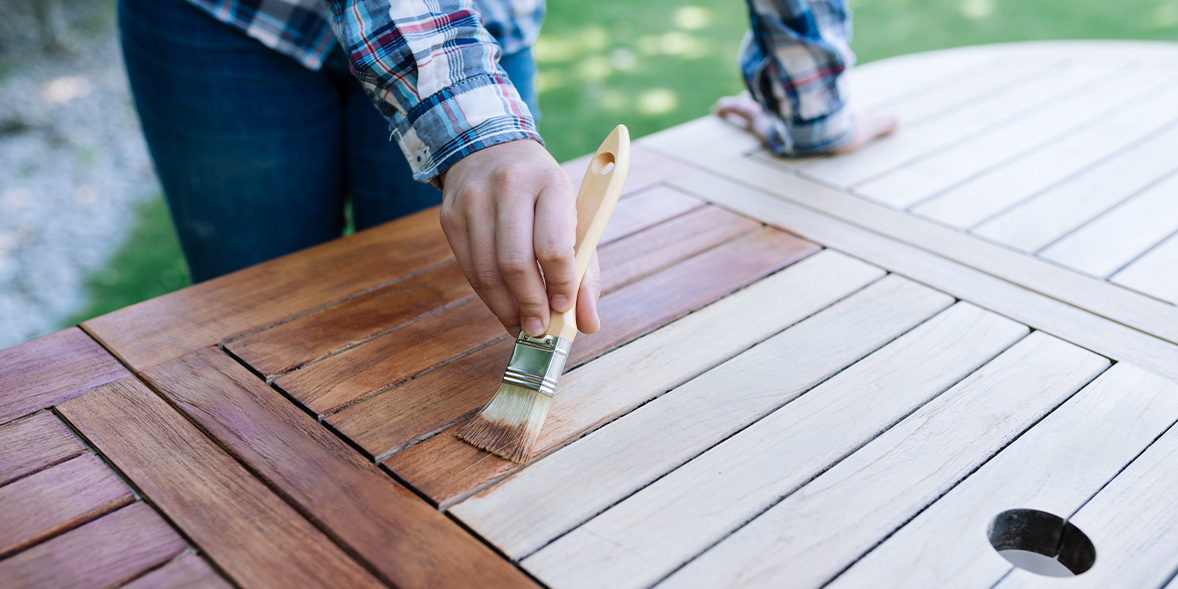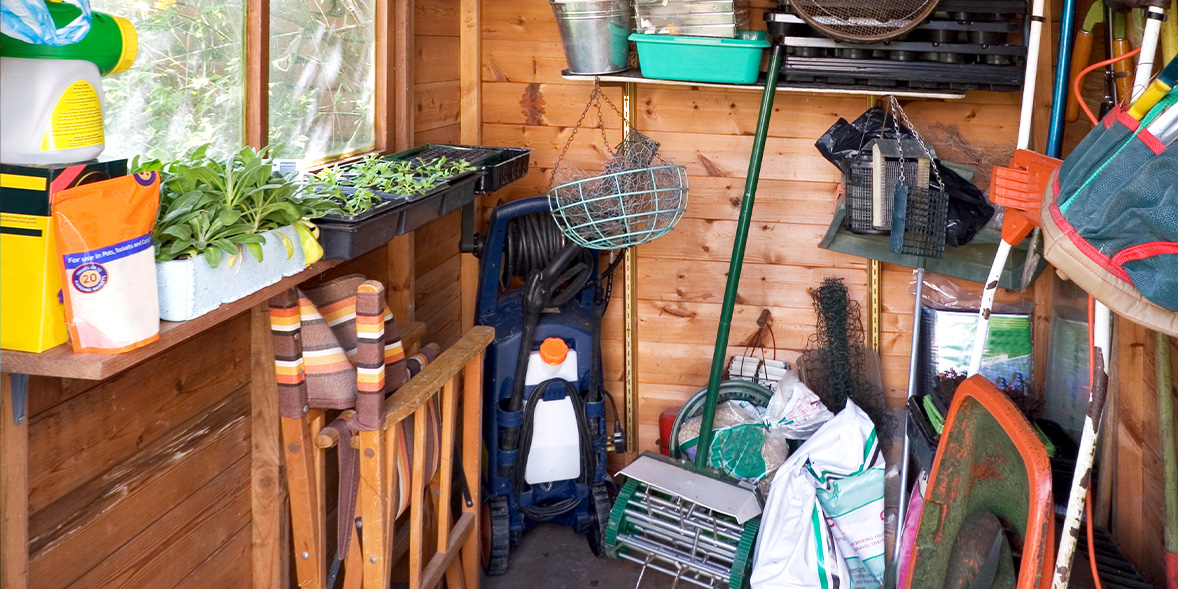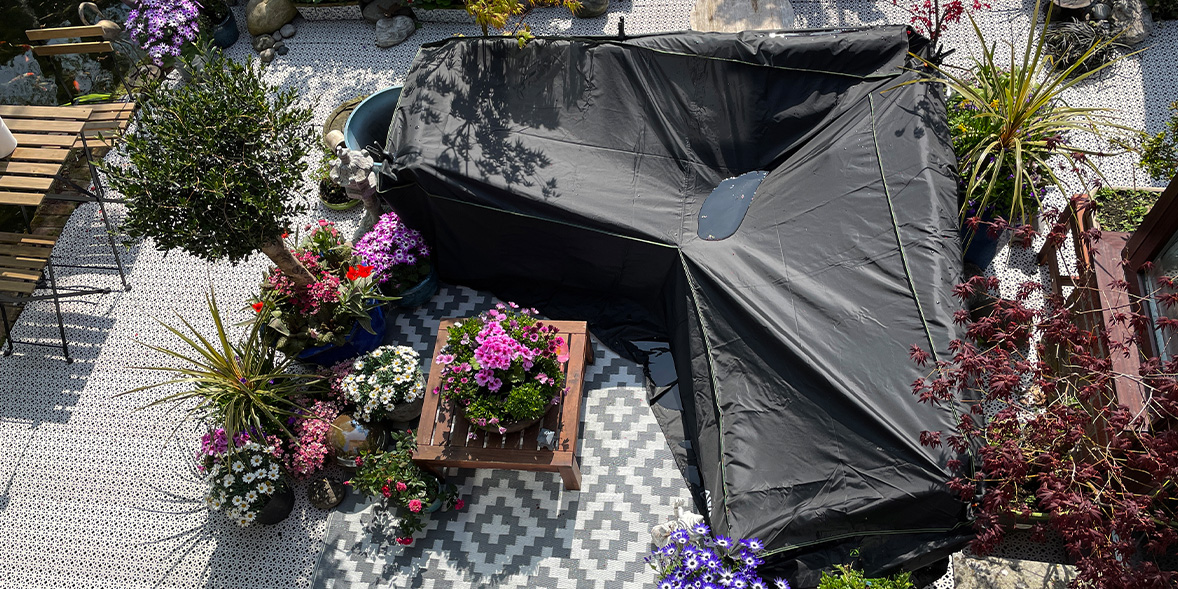Choosing the right materials is a great place to start, but regular maintenance and proper protection will go a long way in keeping your garden set looking new for many summers to come.
From garden furniture covers to cleaning, sealing and treating, our quick and easy maintenance tips are here to help.
Breathe new life into your outside spaces.1. Choose durable materials

Having a garden furniture set that looks nice is great, but it will all be for nothing if it's already rusting or falling apart after a couple of uses. Buying durable patio chairs and tables that can withstand a bit of bad weather is key to ensuring you won't need to waste money on regular replacements.
Metal furniture – including aluminium, stainless steel and iron – will be extremely durable, although heavy. Hardwoods such as teak and synthetic rattan garden furniture will be lighter, yet still very durable if properly maintained.
Plastic furniture is usually cheap, light and can be long-lasting if constructed well, but it has more of a tendency to snap under weight than other materials, can warp in extreme heat and isn't often eco-friendly.
2. Clean your garden furniture regularly

As much as we try to prevent it, your garden furniture is bound to get the odd stain here and there – whether from mildew, sun cream or a dripping ice lolly. But luckily, mucky garden furniture is usually only one good scrub away from looking new.
Wiping the frames with a damp cloth once a week is a good way to keep on top of cleaning, but giving it a more intensive wash two to four times a year will keep it looking pristine.
How best to clean your outdoor furniture will largely depend on what material it's made from – we offer our top tips below. But before you start, always check the care instructions so as not to damage the materials or invalidate your warranty.
What's the best way to clean garden furniture?
Wooden garden furniture Rattan or wicker garden furniture Plastic garden furniture Metal garden furniture Washing-up liquid makes a great replacement for a lot of pricey cleaning products - head to our to find out which are dirt-busting Best Buys3. Seal, stain and treat your garden furniture

Typically used on wooden and metal furniture, treatments can help to refresh tired-looking chairs and tables and, more importantly, extend their lifespan.
Staining, oiling and sealing will brighten up old wood and keep it protected from mildew and mould.
For wooden furniture with an intricate design, you may want to call for a professional as this can be harder to sand down.
Getting your porch in shape before the summer? Look at our recommendation of the .Metal furniture
Most metal furniture should come with anti-rust sealant as standard, but if it doesn't, it's a good idea to apply a protective coating. Preventing rust before it starts is far easier than repairing it once it's spread.
Unsealed iron or any iron-containing metal furniture is particularly prone to problems, so don't wait around if you plan to leave these out over the winter months. You should also repair any worn down or flaking areas on your metal furniture.
If you don't fancy sealing your furniture yourself, opt for aluminium or galvanised steel instead. It won't rust but it can still corrode over time, so it's a good idea to cover or store your furniture safely away in harsh weather.
It's not just your furniture that needs regular maintenance. Keep your grill in good working order by following our top tips on4. Bring your garden furniture inside

British weather is notoriously unpredictable, and leaving your garden furniture uncovered in the wind, rain or blazing sun can cause damage in the long run.
Wooden furniture is most vulnerable to moisture, while lightweight furniture such as plastic or aluminium can blow away in strong winds and storms. If you want your garden furniture to stand the test of time, storing it under a shelter in adverse weather is the best solution (and bonus points if it's under a garden furniture cover, too).
A shed, garage or utility room is ideal, but if you're more limited on space, under an awning would work. Choose compact folding garden furniture if you don't want it to take up too much storage space.
5. Buy a garden furniture cover

If storing your furniture inside isn't an option, a cover is the next best thing. A quality cover should help protect your furniture from the long-term effects of wet weather, animals and UV damage.
Whether you opt for a one-size tent-like structure or invest in a made-to-measure custom covering to fit an awkwardly shaped piece of furniture, there are key things to look out for:
Waterproofing Sizing and design MaterialsSecurityComplete your full patio furniture set with help from our guide on undefinedsource https://www.which.co.uk/news/article/easy-ways-to-make-your-garden-furniture-last-longer-aNWqk1r39xps
